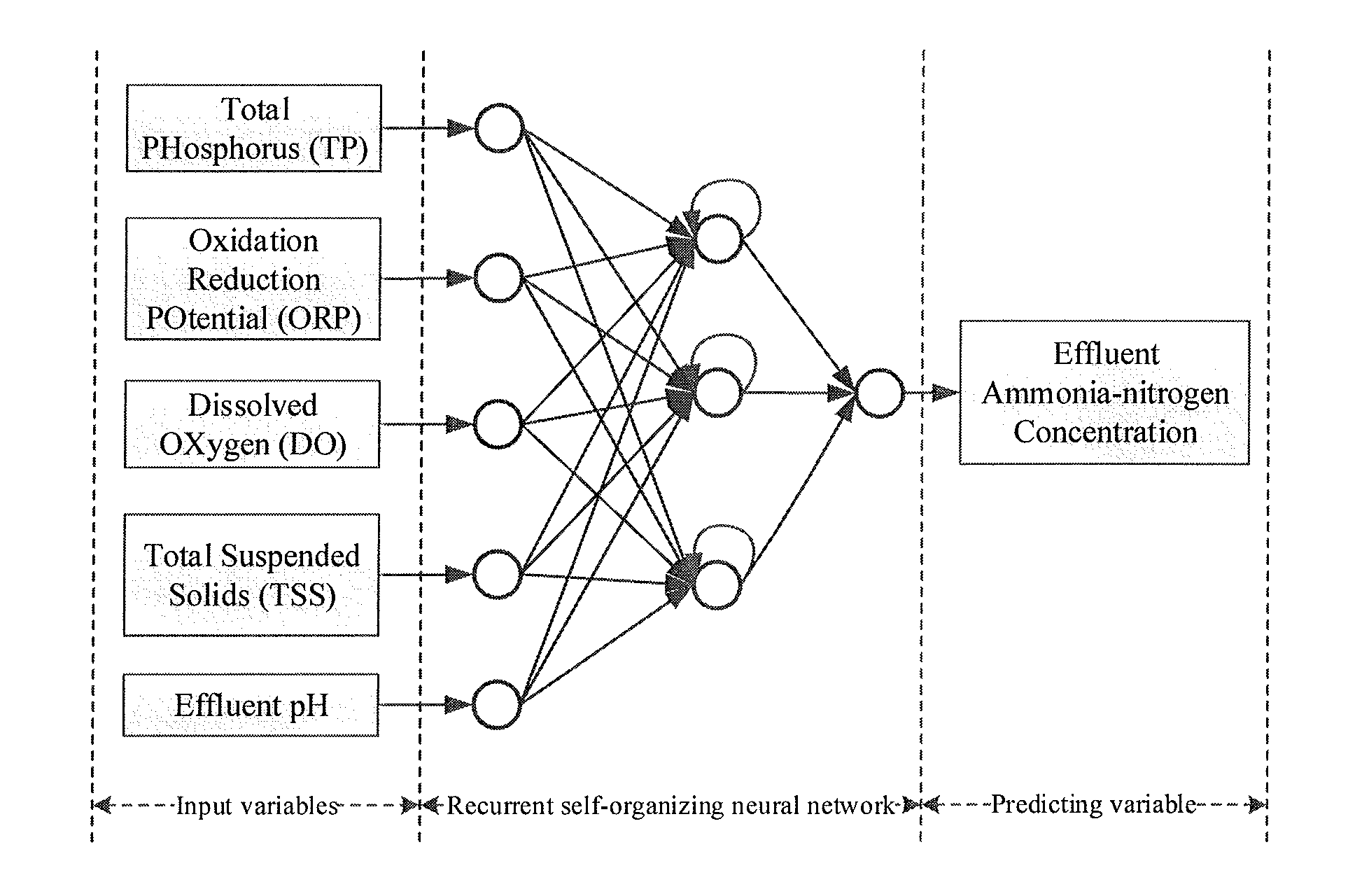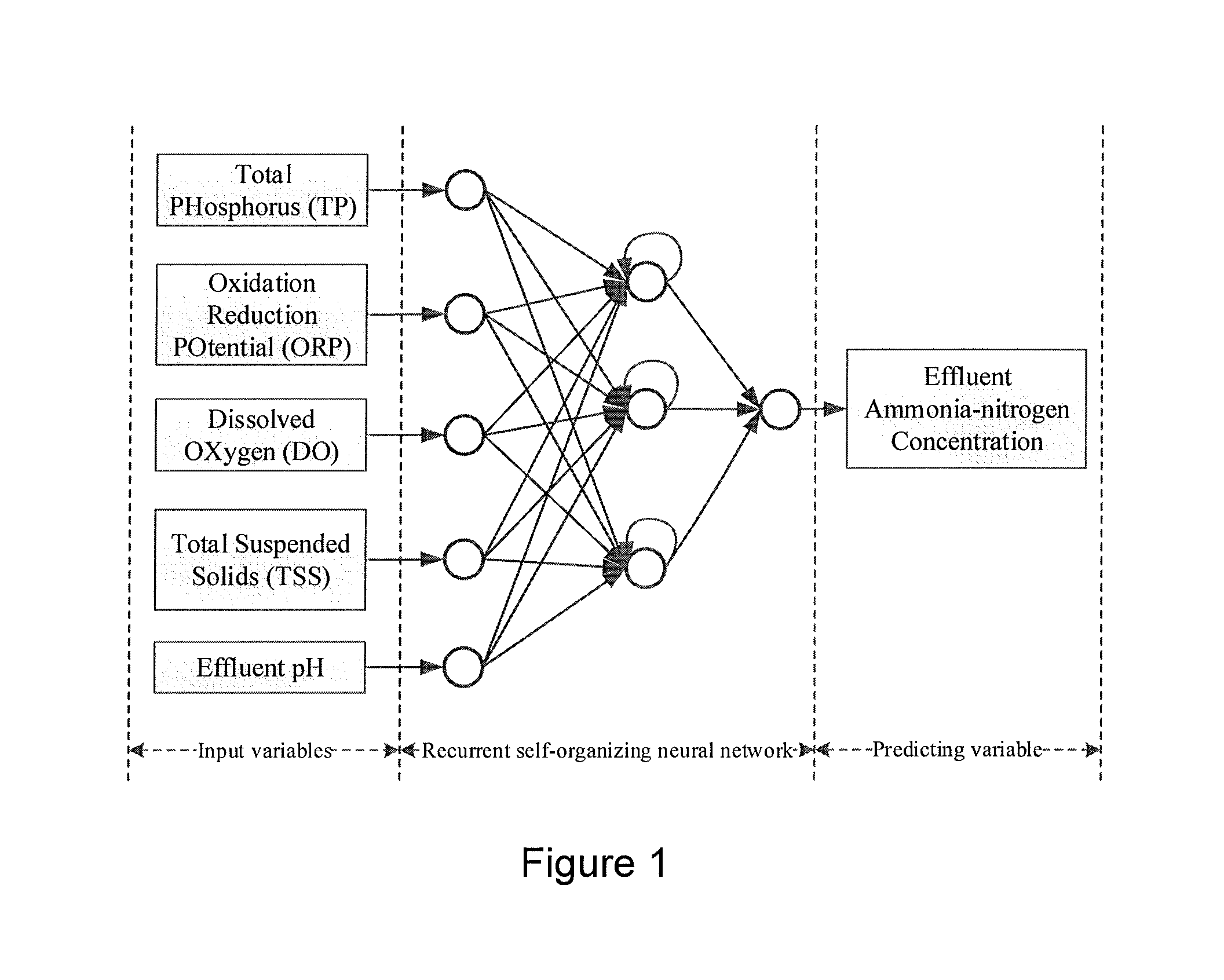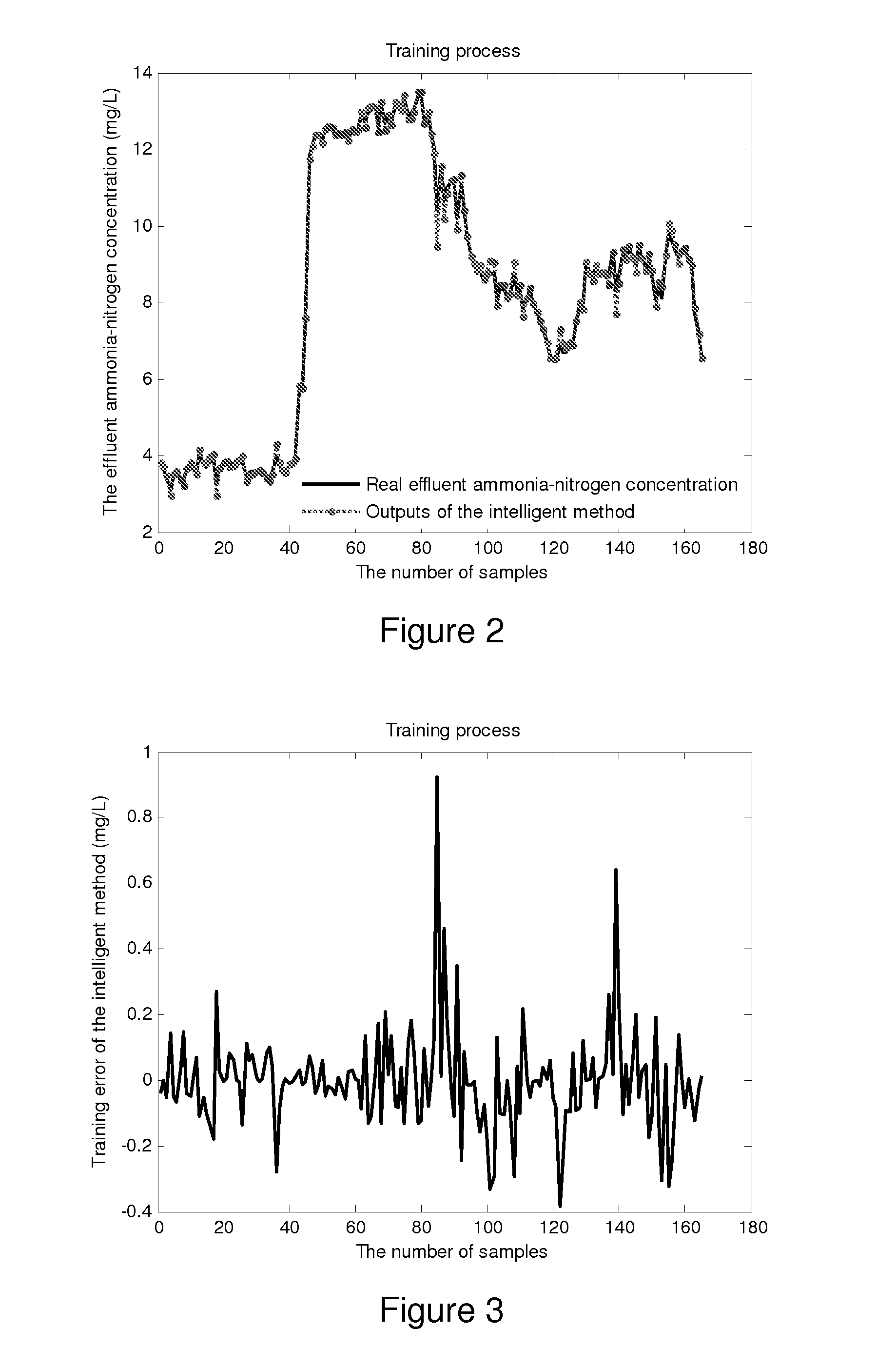Method to predict the effluent ammonia-nitrogen concentration based on a recurrent self-organizing neural network
a neural network and ammonia nitrogen technology, applied in the field of ammonia nitrogen concentration prediction based on a recurrent self-organizing neural network, can solve the problems of difficult reliable field measurements, affecting the accuracy of off-line laboratory measurements, and affecting the environment, so as to improve the efficiency of monitoring the operation of plants, maintain the estimation accuracy, and improve the estimation performance
- Summary
- Abstract
- Description
- Claims
- Application Information
AI Technical Summary
Benefits of technology
Problems solved by technology
Method used
Image
Examples
Embodiment Construction
[0080]One aspect of the present invention is directed to a method for predicting the effluent ammonia-nitrogen concentration in wastewater based on a recurrent self-organizing neural network, which includes:
[0081](1) providing training samples, each training sample including input variables as measured parameters of a wastewater and a measured effluent ammonia-nitrogen concentration of the wastewater;
[0082](2) designing a topological structure of a recurrent self-organizing neural network having an input layer, a hidden layer and an output layer, wherein an initial structure of the recurrent self-organizing neural network is M-K-1, having M nodes in the input layer, K nodes in the hidden layer and 1 node in the output layer, where M>3 is a positive integer and represents the number of the input variables, K>2 is a positive integer;
[0083]wherein an input vector of the recurrent self-organizing neural network is u(t)=[u1(t), u2(t), . . . , uM(t)] at time t, where u1(t) is the value of...
PUM
 Login to View More
Login to View More Abstract
Description
Claims
Application Information
 Login to View More
Login to View More - R&D
- Intellectual Property
- Life Sciences
- Materials
- Tech Scout
- Unparalleled Data Quality
- Higher Quality Content
- 60% Fewer Hallucinations
Browse by: Latest US Patents, China's latest patents, Technical Efficacy Thesaurus, Application Domain, Technology Topic, Popular Technical Reports.
© 2025 PatSnap. All rights reserved.Legal|Privacy policy|Modern Slavery Act Transparency Statement|Sitemap|About US| Contact US: help@patsnap.com



